Seventeenth of May – when the land is getting green again
Nobody celebrate their national holiday like us Norwegians, but that should not be taken as extreme nationalism. It's true that nationalism was an important incentive before 1905 when we were still in union with Sweden, but already in the late 19th century the celebration got an element of children's day. Today it's partly for the children, but it's also a family day. And most important: We're celebrating that the winter has ended, the summer is close, the nights are already short, and the land is getting green again

Pictures from the streets of Trondheim 17 May 2004 when the day was somewhat chilly and 2013 when it was unusually warm.
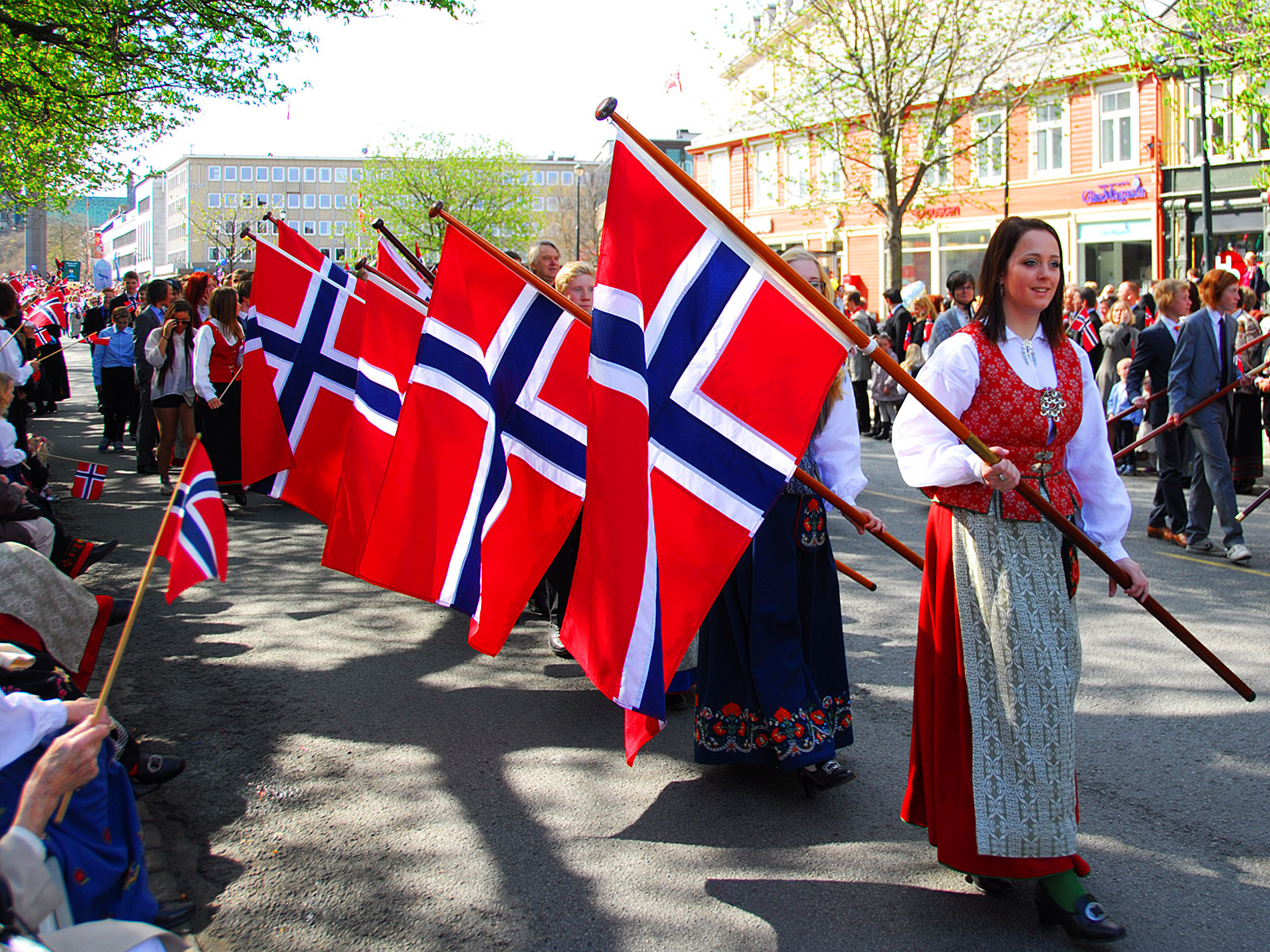
On Constitution Day we are often awaken very early by a brass band marching and playing in the streets. Later there are one or more processions, and always one for the school children. In the processions and elsewhere there are Norwegian flags, big ones and innumerable small ones.
(2013)
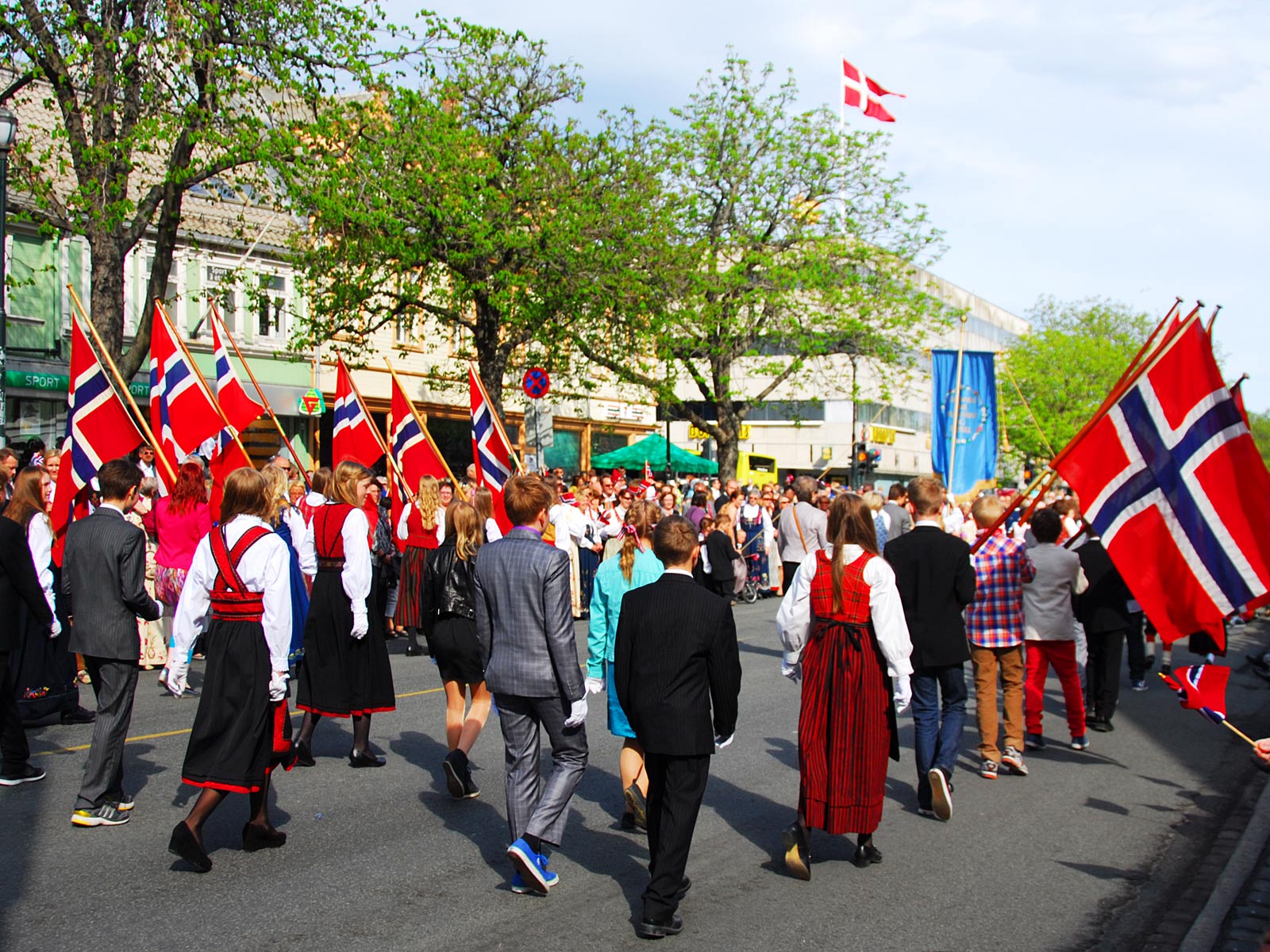
A Danish flag on top of the building housing the Danish consulate. Back in 1814 several things happened: We left the union with Denmark after 434 years. Then Norwegian delegates agreed to the new Constitution in Eidsvoll, that's what we're celebrating here today. Later that year we joined Sweden in a new union that lasted till 1905, but that has never been celebrated. I'm not saying anything negative about our closest neighbours, the Swedes.
(2013)
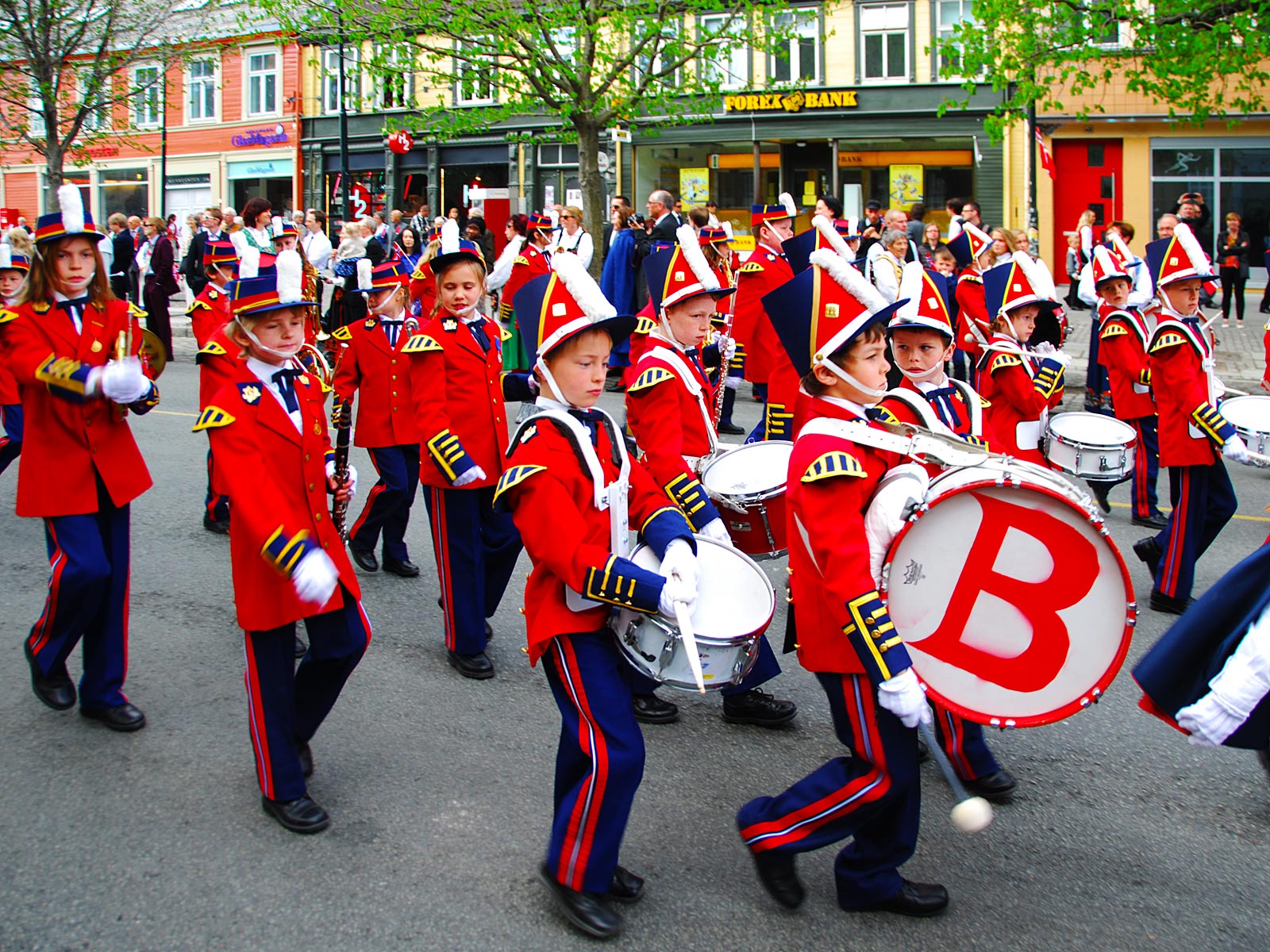
A procession needs music. Some schools have their own brass bands and a couple of old boy bands also participated.
(2013)

Our future. Celebrating Constitution Day is a serious matter, but this is of course also an unofficial Children's Day.
(2004)
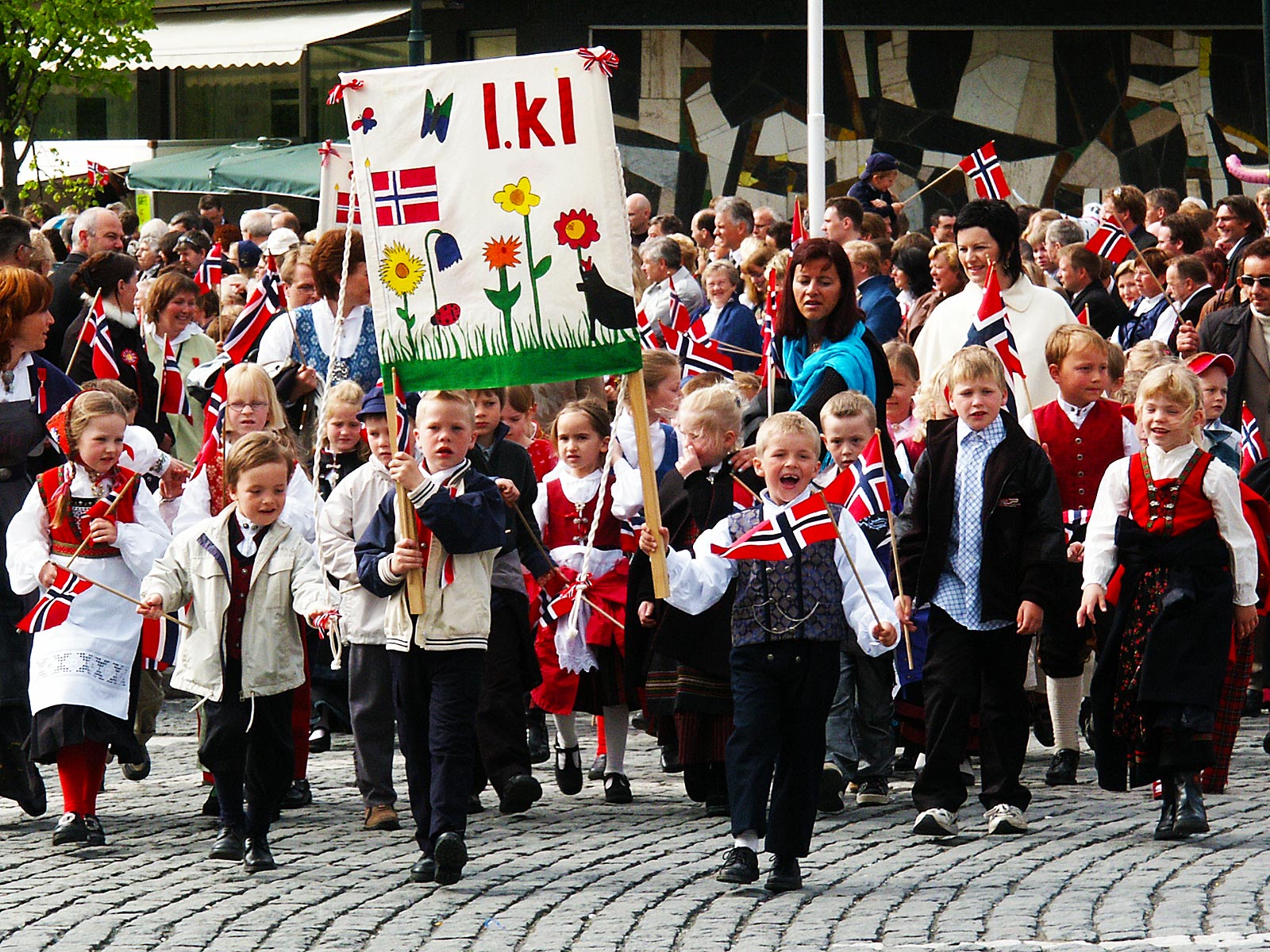
Our future. First grade, a little guidance is sometimes needed.
(2004)
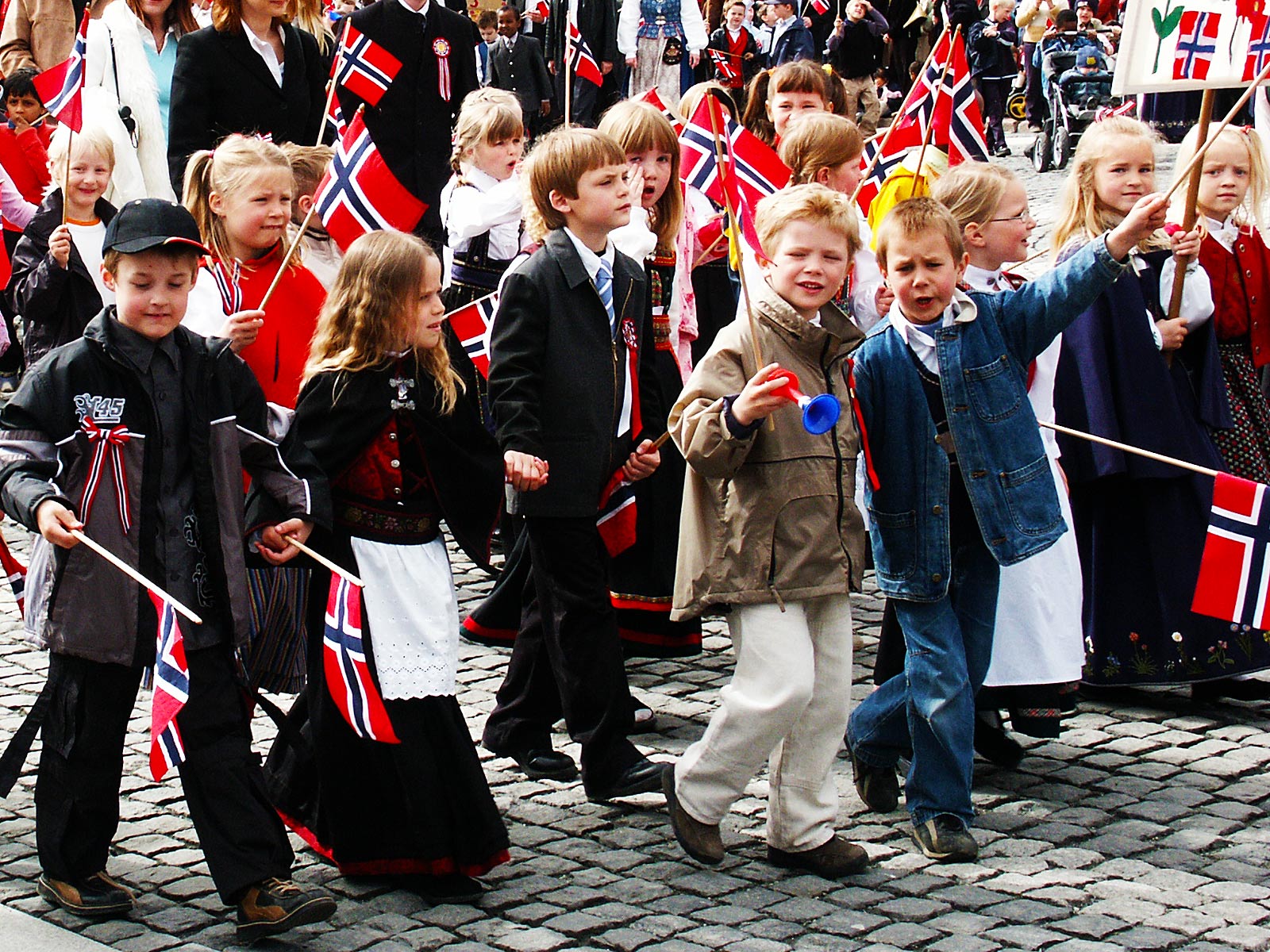
Our future. Also first grade and enthusiastic.
(2004)
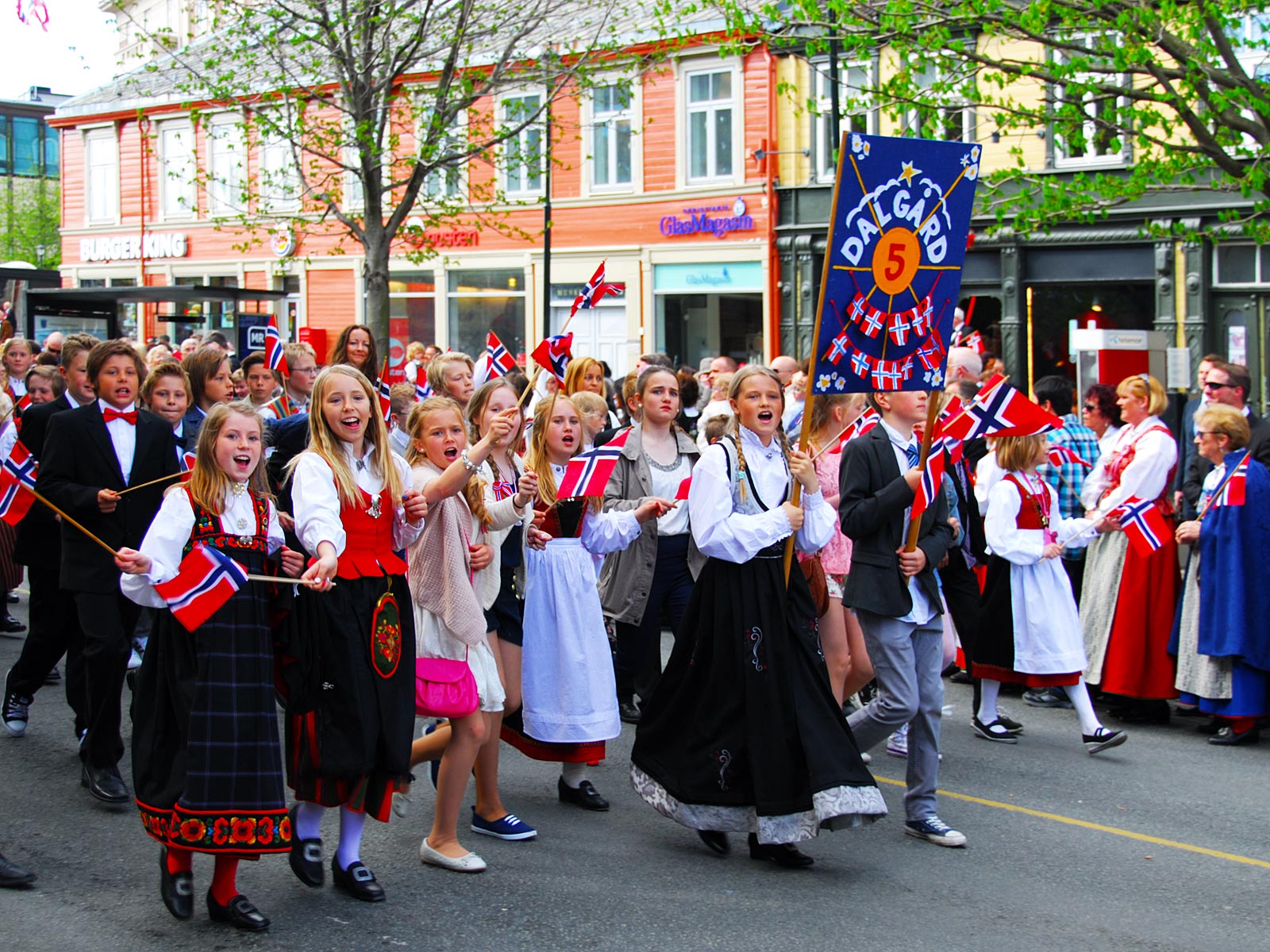
Somewhat older pupils, and the girls have become the most enthusiastic ones.
(2013)
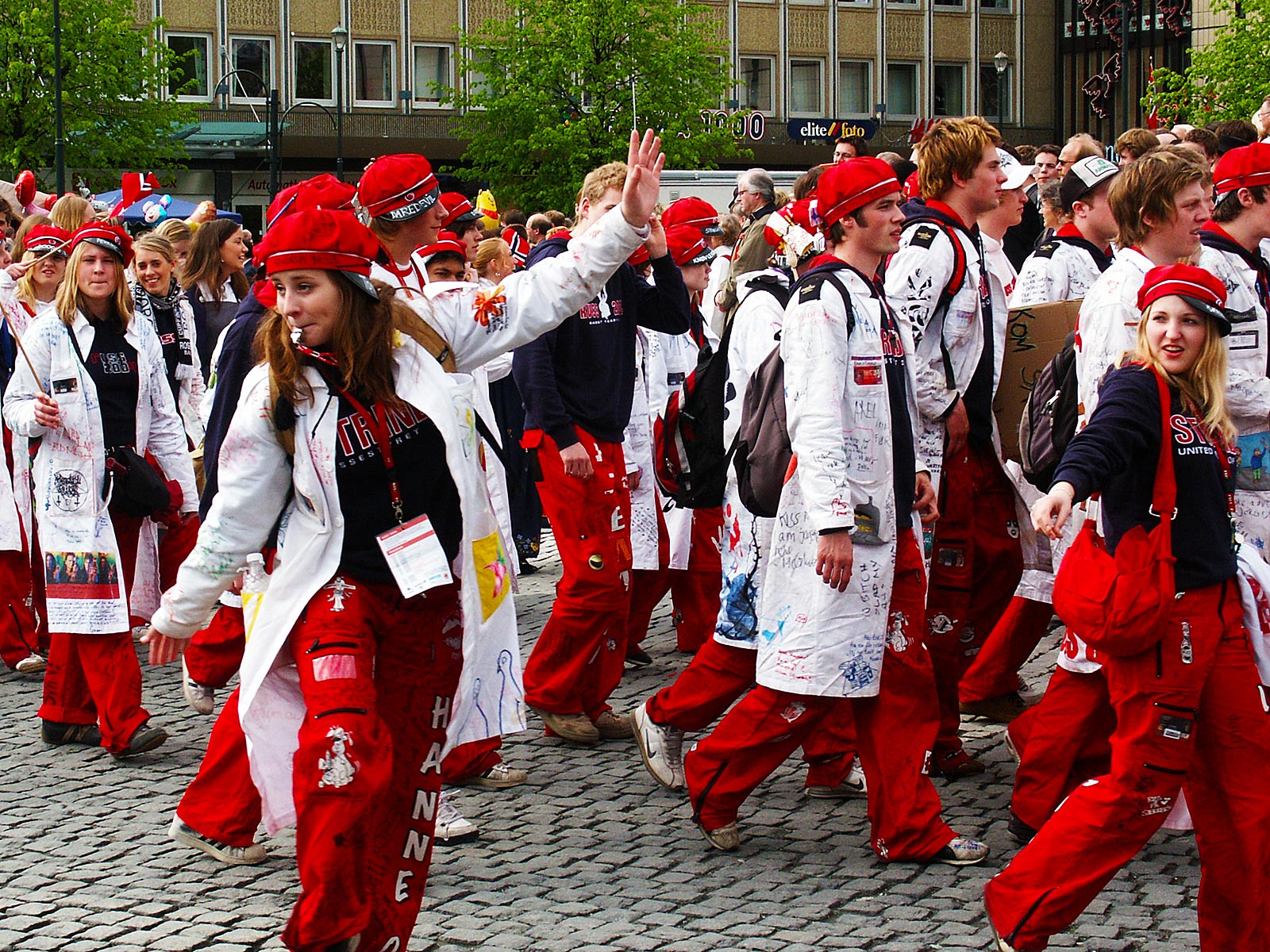
College students traditionally celebrate the end of school (before going to the university etc.), wearing the characteristic red caps. This celebration culminates on the 17th of May. There are only a few of them in the school procession; the rest is probably still in bed!
(2004)
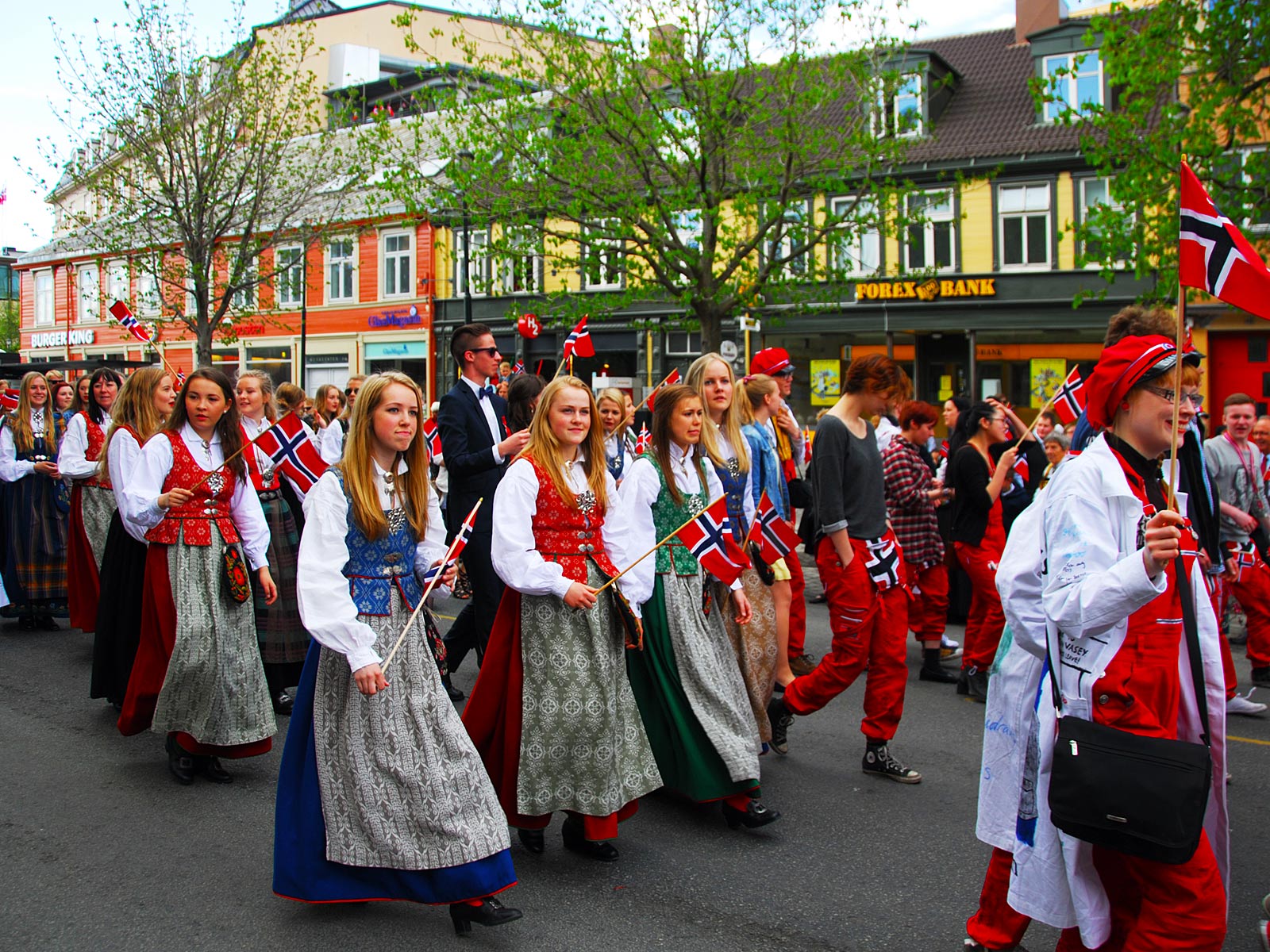
National costumes are called "bunad" in Norway. In the other Scandinavian countries the name is equivalent to "people's costume". "Bunad" is an old word meaning any objects needed for a proper life, but it's now used only for this costume. They have been designed mainly during the last hundred years, using much older costumes as guidance. They are used on special occasions and are accepted everywhere, for example in weddings and if you're among the few being invited to the King. There are now about 450 national costumes for smaller and larger districts. Trondheim is the biggest town in Trøndelag, so naturally there are many girls with Trøndelag "bunad" to be seen. Unique to this type, it comes in four colour variants: blue, red and green as represented here, and lately also black.
(2013)
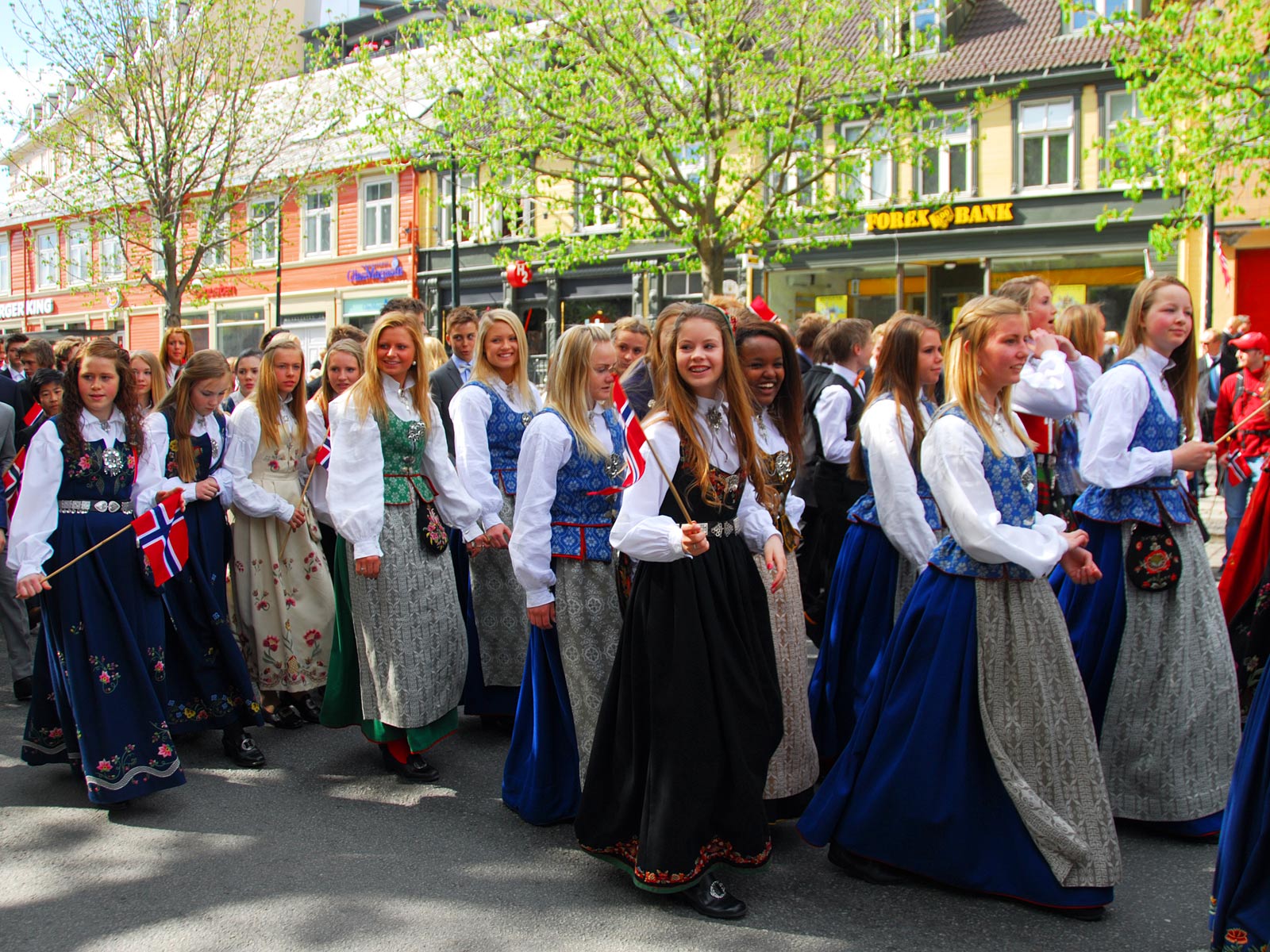
A "bunad" for a woman, including the silver, may cost USD 5,000, or probably up to twice as much for some types, but still some eighty percent of adult Norwegian women owns one. And twenty percent of the men. This picture shows more girls wearing Trøndelag "bunad"; as for the other ones, I don't know.
(2013)

In addition to one red Trøndelag "bunad", this picture shows three (black with green etc.) ones from Nordland, the county immediately north of Trøndelag. Many young ones come here from Nordland to go to school or university.
(2004)

More Trøndelag girls, but to the left there are two men also wearing national costumes. Few men wear "bunad", therefore I happily show mostly girls on this page. I assume that most adult persons in the children's procession are teachers.
(2013)
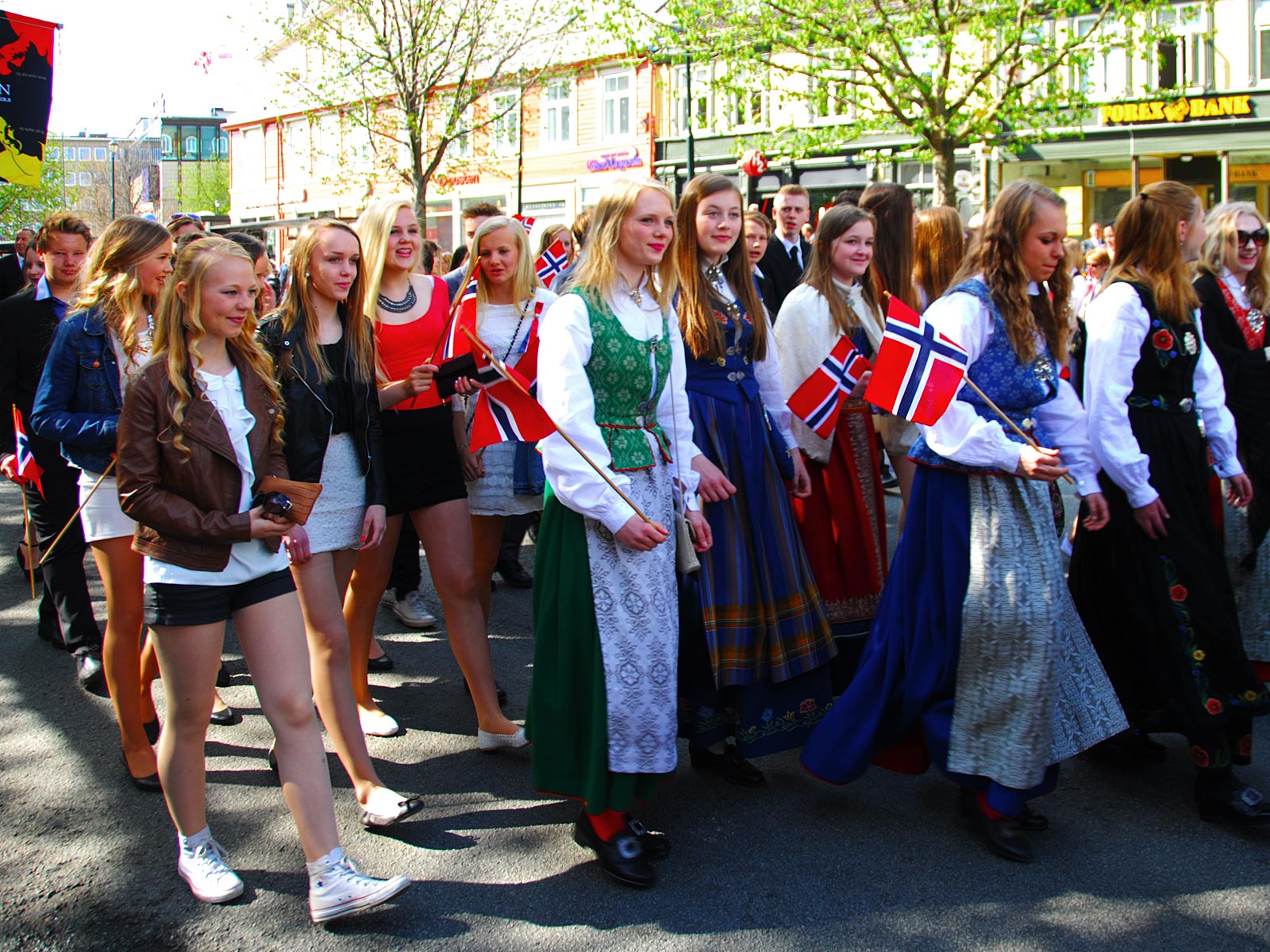
To point out that a "bunad" is made of woolen fabrics. It's sometimes quite uncomfortable wearing it on those warm and sunny days that we all want for the great celebrations.
(2013)
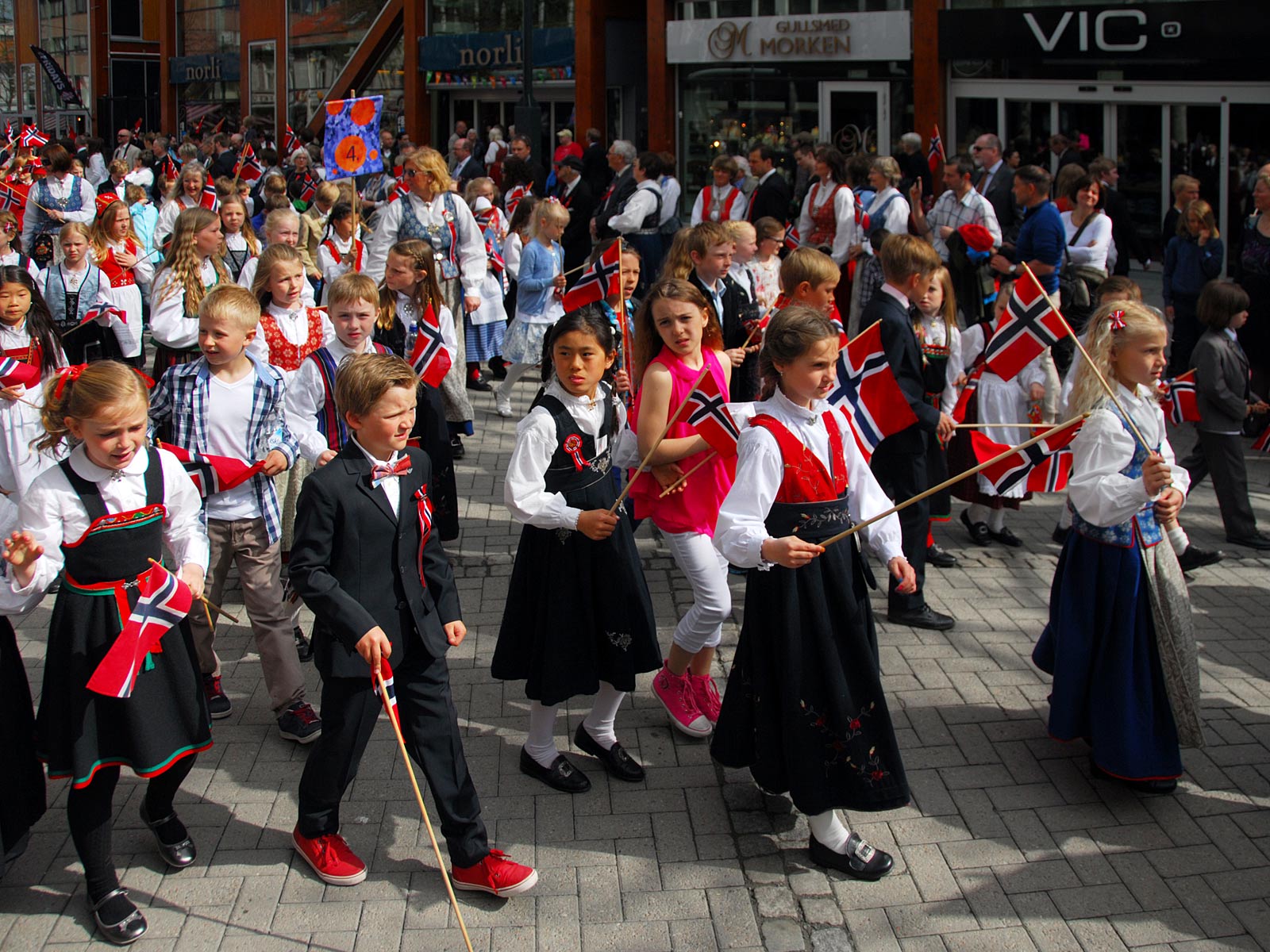
Some, particularly children, wear similar, but simpler and unapproved costumes. In this picture I can spot 2–3 small girls wearing the true Trøndelag "bunad".
(2013)
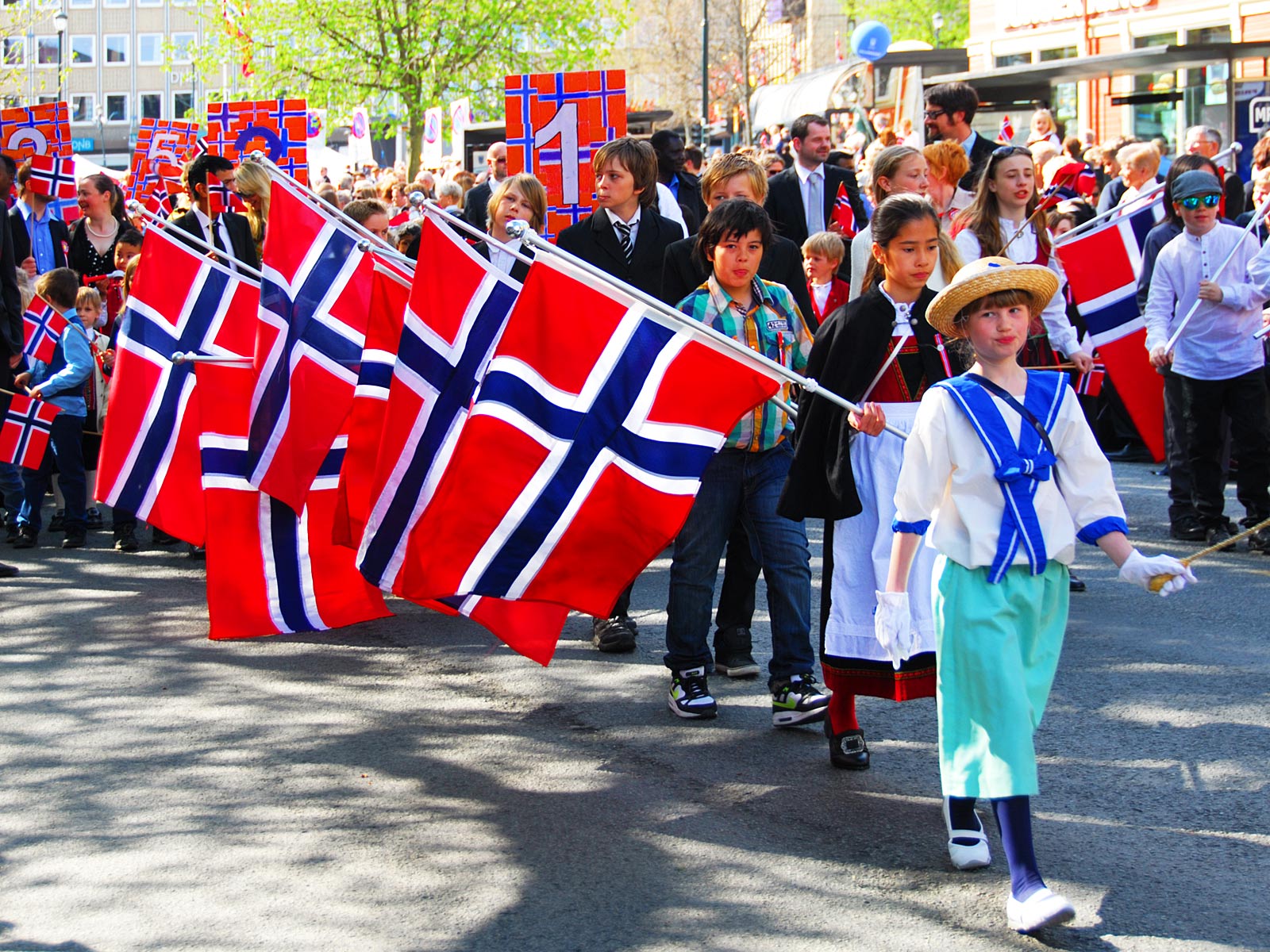
Hereabouts people say that the Norwegian flag is the world's most beautiful one. I'm not qualified to comment on that.
(2013)
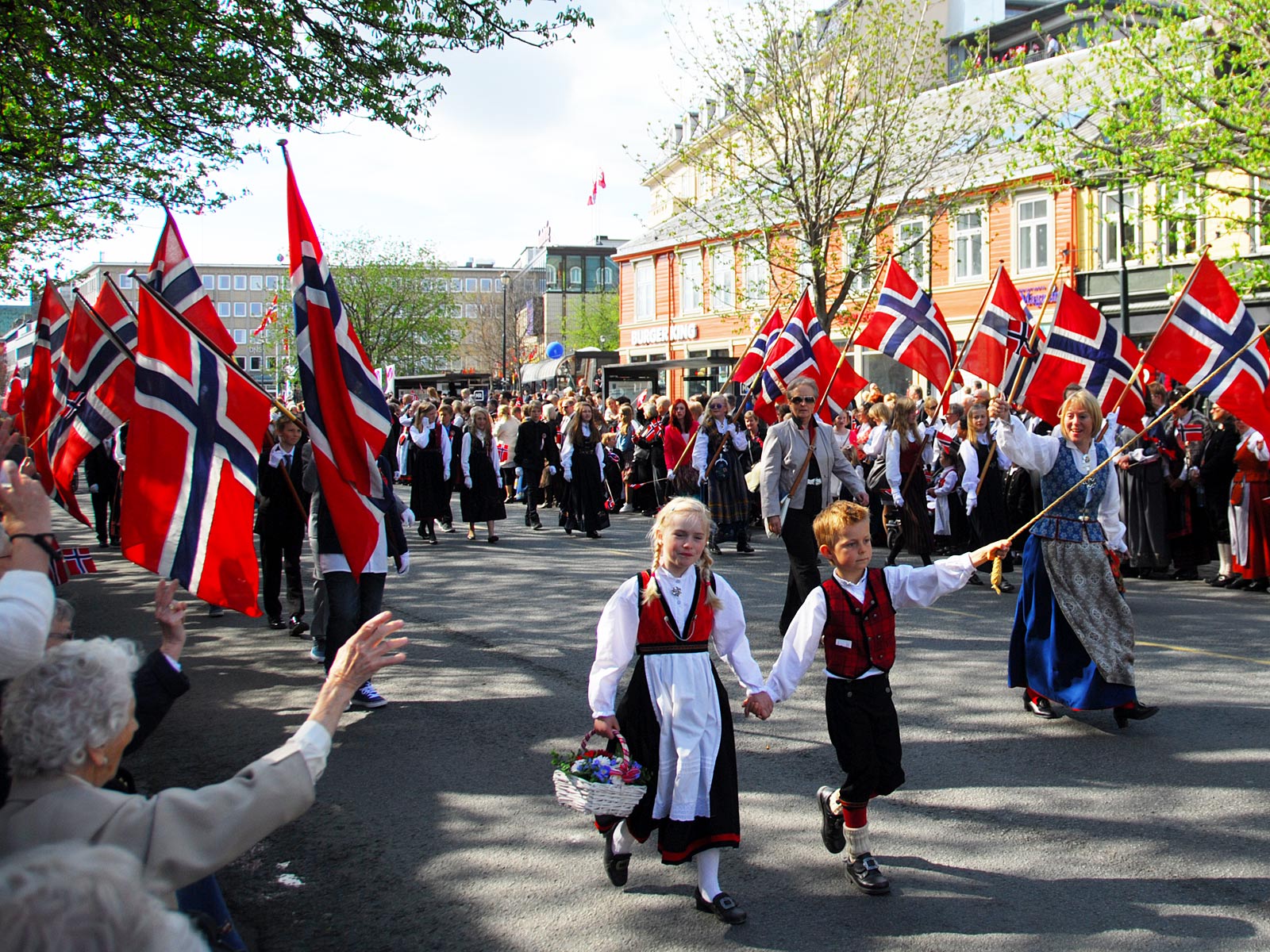
On the seventeenth of May we all greet each other: "Gratulerer med dagen", literally "Congratulation with the day". The "day" is most often a birthday, but can be any important day. Actually, it can be seen as the birthday of the independent Norway. Well, we were independent after we became a nation nearly thousand years ago till 1380 when we were united with Denmark. That union lasted till 1814 when we had just time to agree on a Constitution before the Swedish king took over. That lasted until 1905. There was also five years, 1940–1945, when die Wehrmacht ruled the country and these flags were strictly verboten.
(2013)
